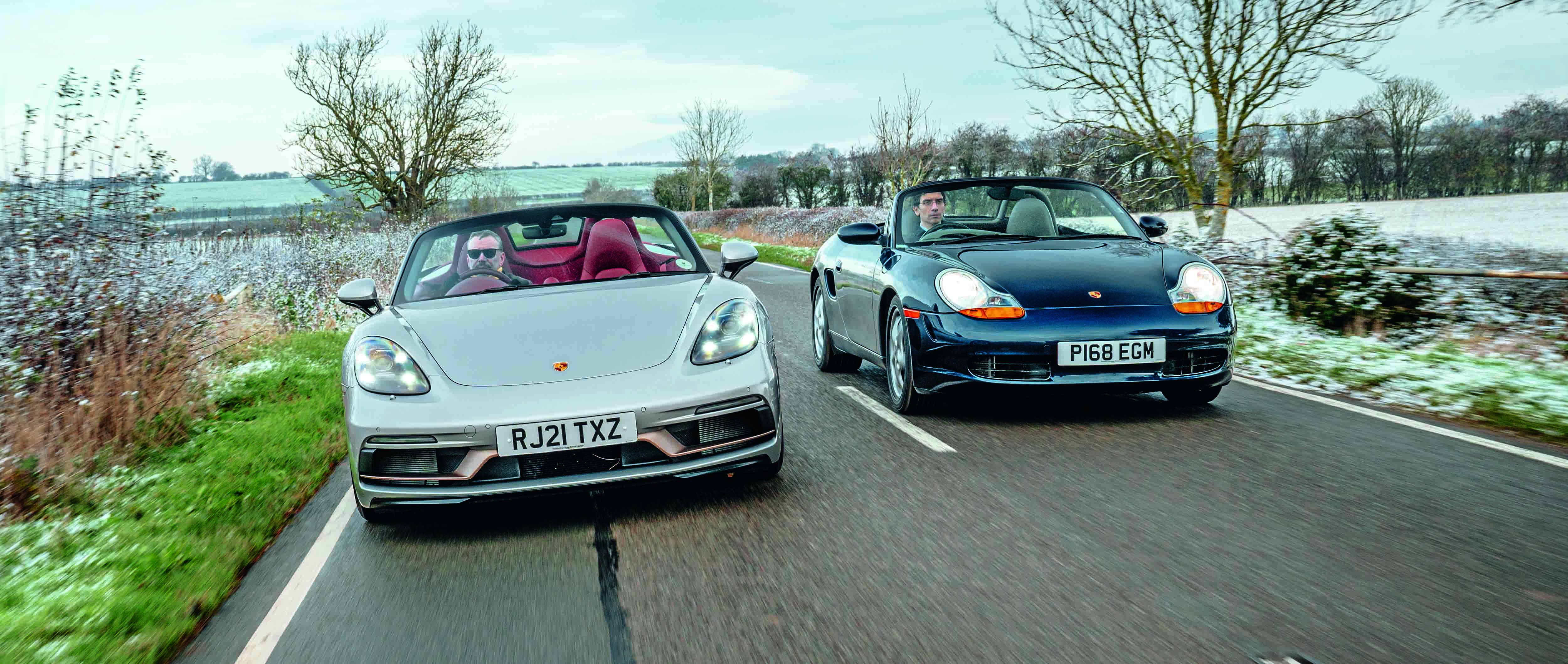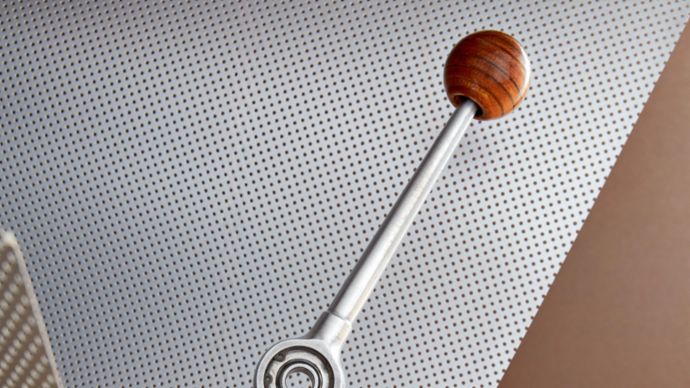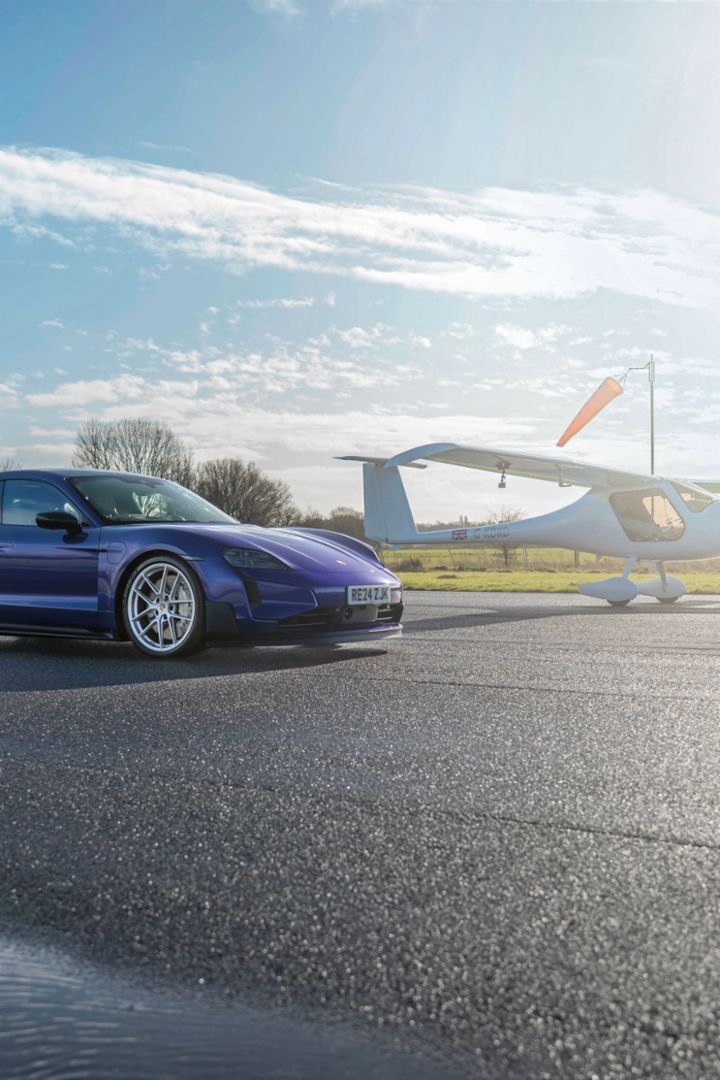Evolution of the species
Porsche Great Britain – Road test: A quarter of a century ago, the launch of the Boxster revolutionised the sports car market and transformed Porsche as a company. We unite the original and latest models for a special celebration
The Boxster arrived 25 years ago, and rocked the world of sports cars. Today, the 718 Boxster remains as relevant as ever. Now, as then, it manages to stretch itself across contradictory qualities: a pure-bred sports car, a carefree roadster, yet one that’s also refined and usable every day. And it’s affordable. No wonder the world went mad for it in 1996.
Today, one collector, Chris Efthymiou, owns both of the original press cars. Now a heart surgeon but then a student, Chris owned an earlier mid-engined Porsche, the 914, when Car magazine was looking to compare one with a Boxster. He took part in the test, loved the Porsche Boxster concept, and put down a deposit way before the production car emerged.
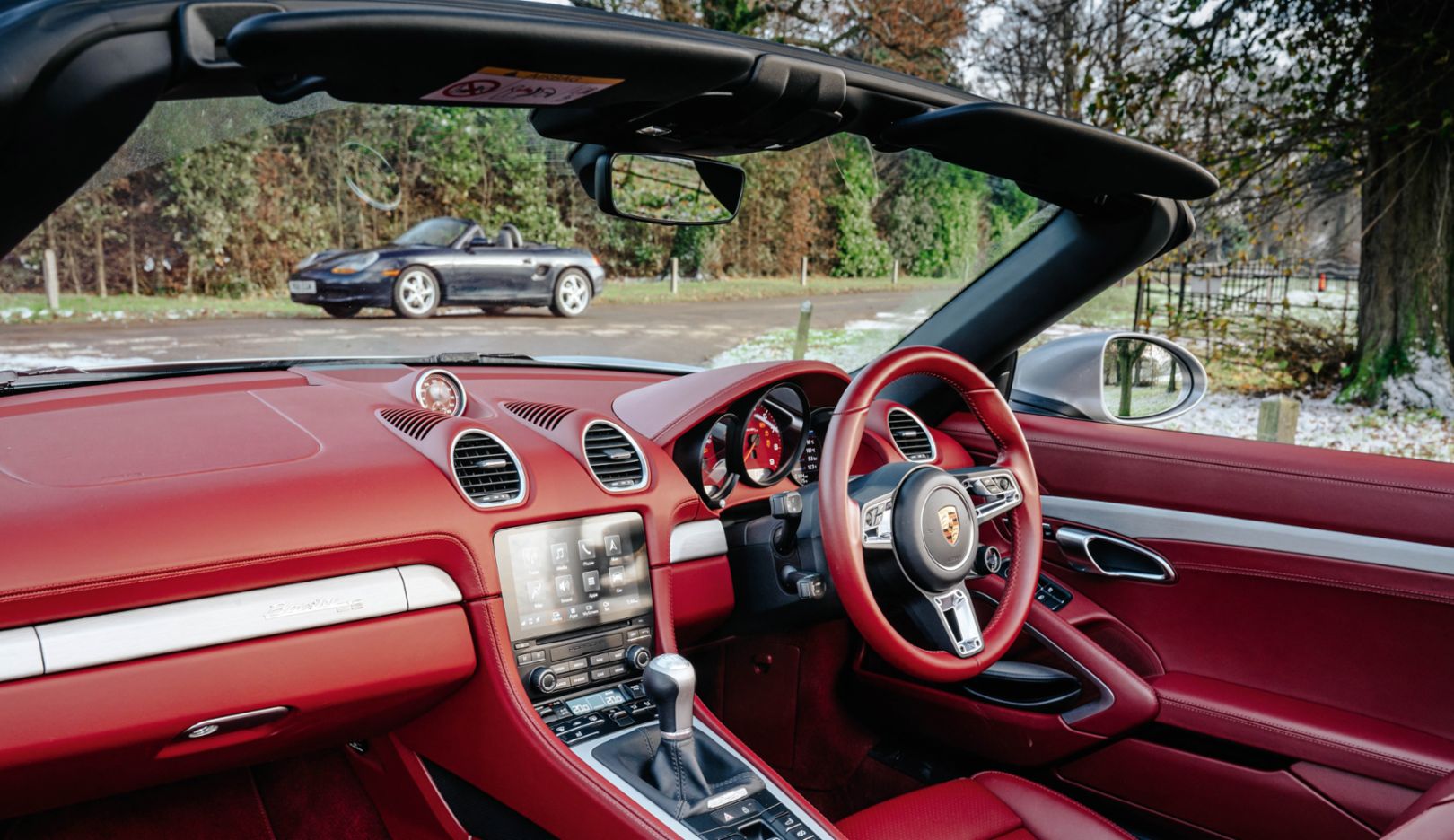
Many years later, he started a search for the car he’d driven on that Car magazine test – a silver one registered P159 EGM. ‘I’d been looking for years, then stumbled on P168 EGM. A nurse was selling it.’ But the car that was registered later is actually older. ‘I bought it and then I realised that there was a gap in the two chassis numbers of about 800 cars. I found out it was a “shakedown car” and the first right-hand-drive UK Boxster.’
He eventually tracked down and bought the 159 as well, but the dark-blue 168 is the car he’s loaned to us for today’s drive (it’s seen here with a 718 Boxster 25 Years model). I first tested the 168 back in the day – but can it recapture that memory?
A pure-bred sports car, a carefree roadster, yet also refined and usable every single day
The design has aged well. It’s serene and softly rounded like an eroded pebble, whereas today’s 718 model has some edges, and flatter surfaces. Inside, the dash is a simple, elegant affair, without the big-screen systems new cars carry.
The early car’s 2.5-litre flat-six hums a deliciously sweet musical note. At 4,500 rpm, the engine howls charismatically, urging you to travel to the red line. The nerve-quick throttle response makes the engine seem like one of your own limbs. Today, too, if you desire six cylinders, the Porsche Boxster range will provide them, with the GTS (718 Boxster GTS 4.0: Fuel consumption* combined (WLTP) 10.9 – 10.1 l/100 km, CO₂ emissions* combined (WLTP) 247 – 230 g/km, CO₂ class G ) and 25 Years models (), while the rest of the line-up is equipped with boxer four-cylinder turbos ().
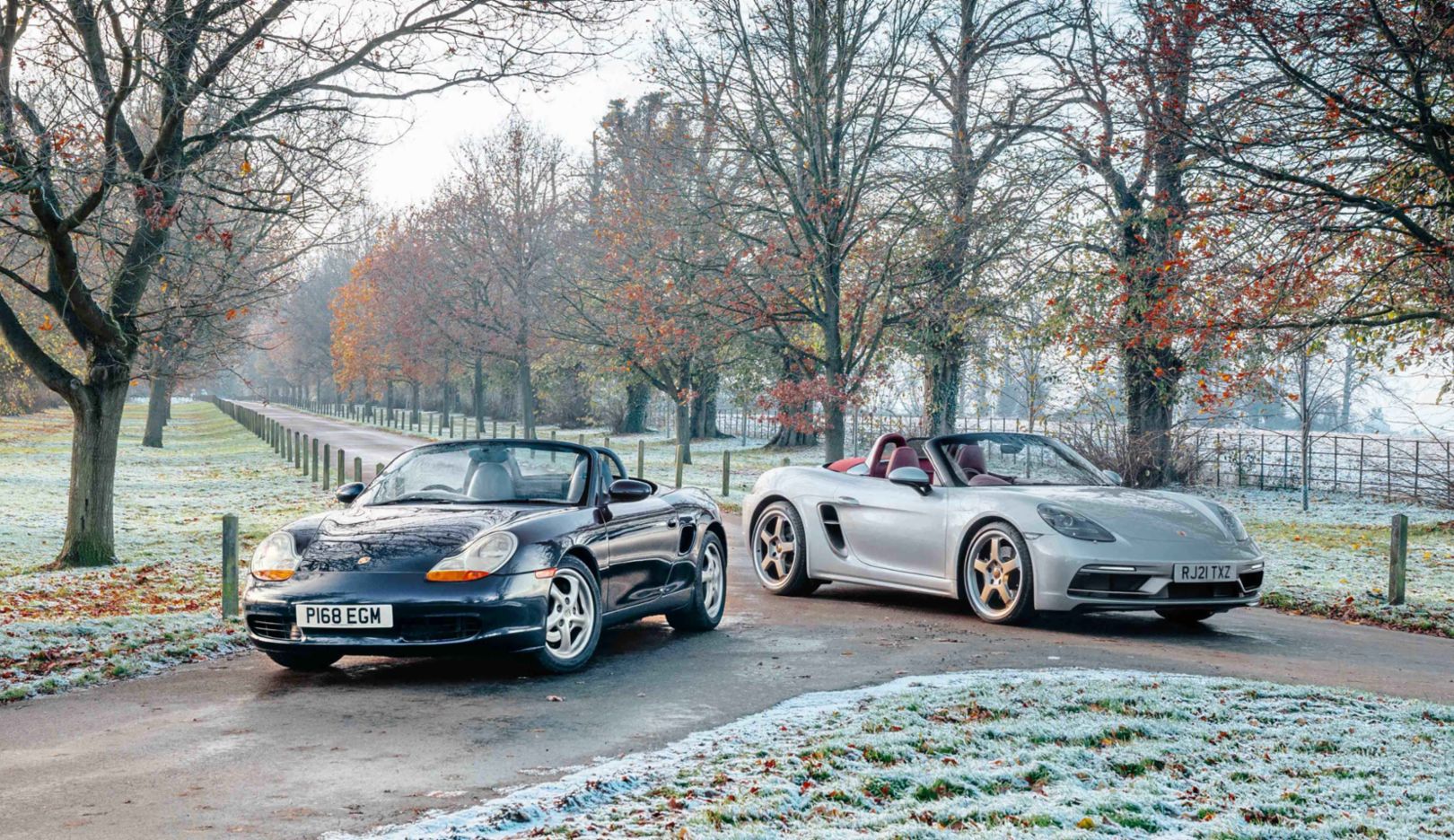
Freeze frame:
A quarter of a century may separate these two examples of the Porsche Boxster, yet judged across every single criteria, from styling to driving, the lineage is clear and strongOn narrower tyres, the first Boxster has less grip, of course, but the payback is transcendent steering. It conveys to your palms every change in the road surface and in the lateral forces. By contrast, the new 718 is more stiffly sprung and more tightly damped. It’s a more serious-minded machine, with extra grip and extraordinary levels of agility and control. Still, you absolutely can feel the lineage.
While the Porsche Boxster changed the sports car market, it also transformed Porsche. In the early 1990s, the company was buffeted by a recession, an unfavourable dollar–Deutschmark exchange and an elderly model range. The Boxster began a turnaround, although its development was a whirlwind, as we learn from two people critical to its success. Horst Marchart, now retired, was a board member for R & D at that time. Grant Larson, lead designer of both the concept and production Boxster, is still at Porsche.
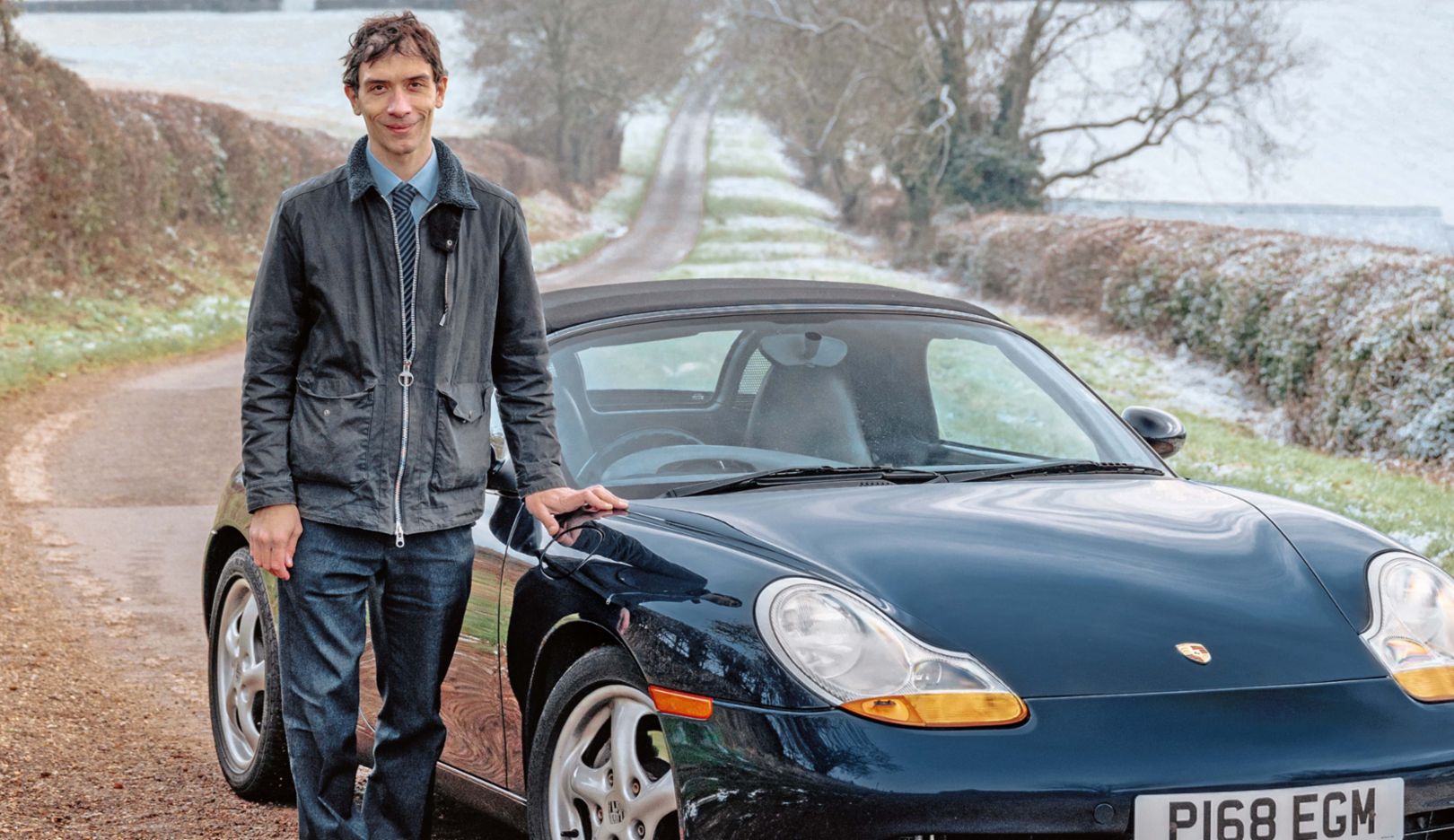
Just what the doctor ordered:
Christopher Efthymiou does all his own maintenance work on both his beloved Porsche Boxster models‘The Boxster rescued the company,’ says Marchart, bluntly. He says he wanted to go back to the roots of Porsche with a smallish two-seater. His other critical aim was to share parts. ‘We would do a new car with an identical front half to the [upcoming 996 generation] 911 but a mid engine. We worked fast. It was a life or death situation. More than half the parts in each car were shared, and that saved 40 per cent of the development costs.’ It also slashed manufacturing and purchasing costs of both cars, keeping the Boxster’s price down for the happy customers.
But a sports car has to look great as well – and that particular task fell to Grant Larson: ‘We had to have a hit, to resurrect the company. We put ourselves under a lot of pressure. This gave the team new optimism. I was young with nothing else to do but work like crazy. It was an honour.’
The Boxster changed the sports car market, and transformed Porsche
‘We had the idea for a two-seat roadster, mid-engined and very emotional,’ says Larson. ‘The concept car’s form was long, with cab-forward proportions. The body was strong over the rear wheels, and there was lots of sculpture in the side of the body. The driver was bolstered while the passenger had more space. The design department thought of the name Boxster – boxer and roadster.’
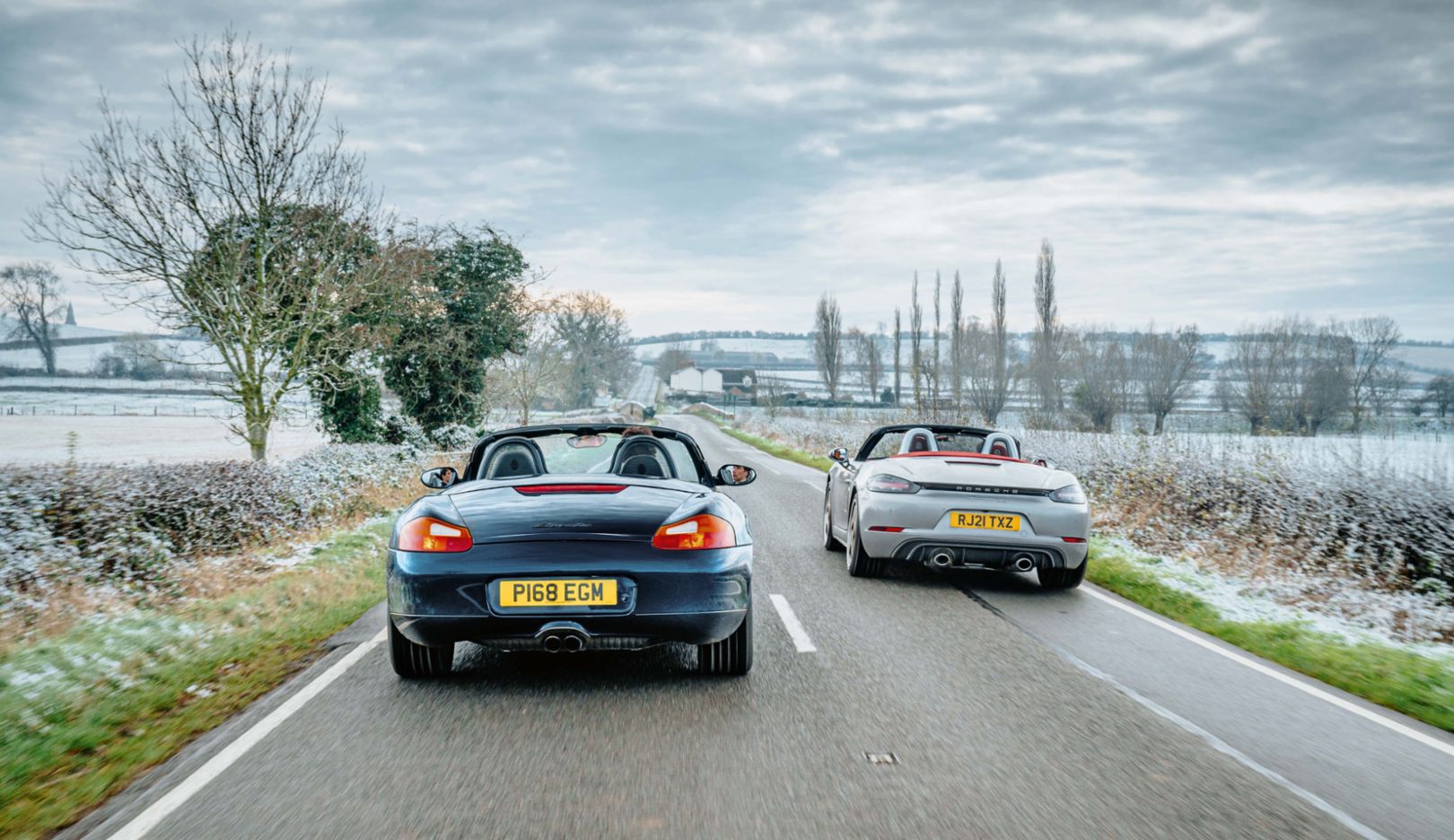
Song to the siren:
Both the original Porsche Boxster model and the latest incarnation in 25 Years guise are powered by evocative-sounding six-cylinder boxer engines that thrive on revsTurning some of those concept elements into a production car wasn’t easy. The side vents were moved up from the sills to the flanks because, Larson explains, racing experience showed they would have sucked dirt into the engine. The sides lost some of their curve in order to share doors with the 911. Almost the whole front of the car is the same as the 911, as are the suspension and brakes, along with much of the interior.
The Boxster was a huge success, and in total more than 350,000 examples have been sold. Didn’t Porsche fear the car could hurt 911 sales? Marchart had no doubts. ‘No. We wanted younger customers. The 911 would always be a faster car if you were a good driver, but the amateur driver found the Boxster easier.’
I fell into the latter category, and driving this lovely original, as well as the latest Porsche Boxster, reminds me why.
Consumption data
718 Boxster GTS 4.0
Taycan Turbo GT
-
21.2 – 20.5 kWh/100 km
-
0 g/km
-
A Class
